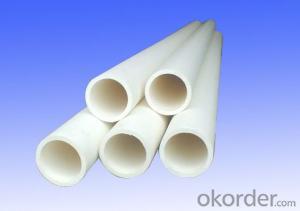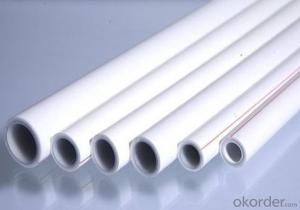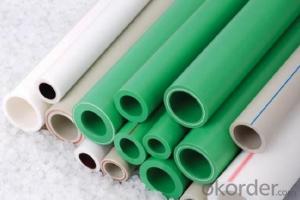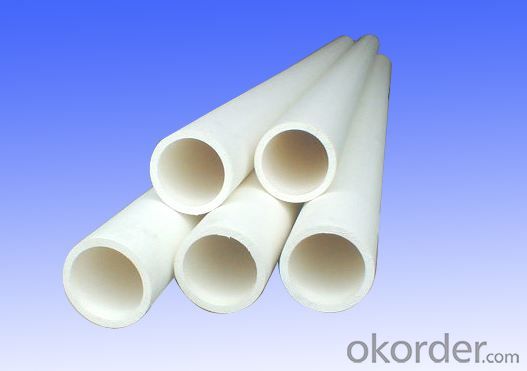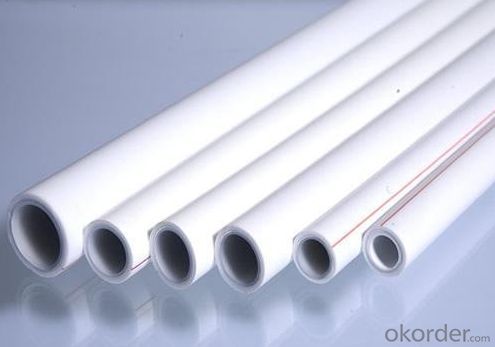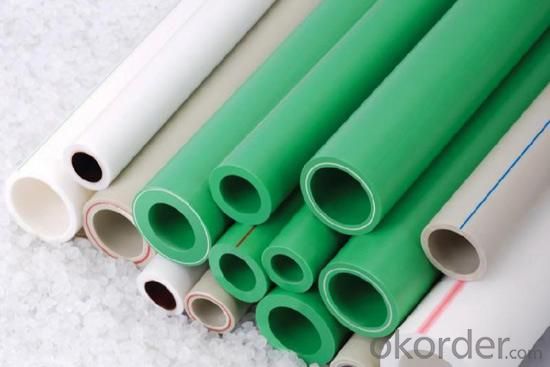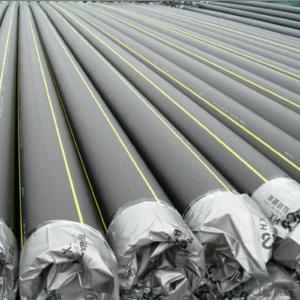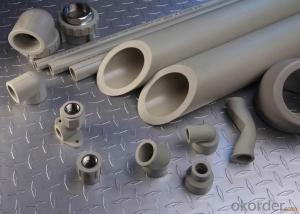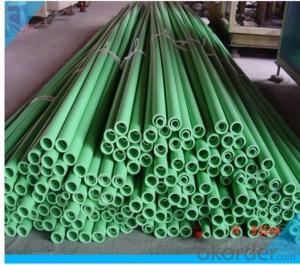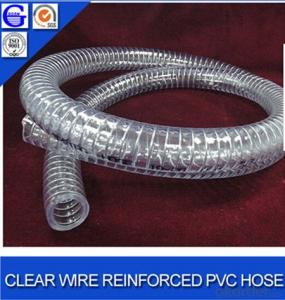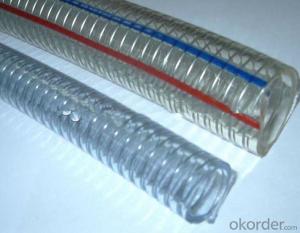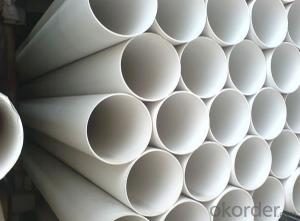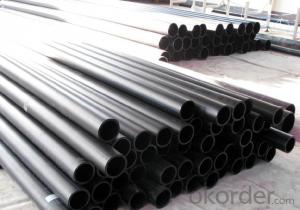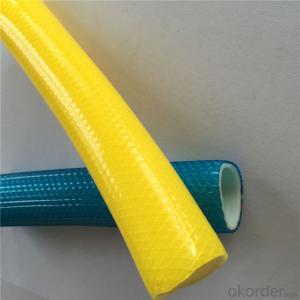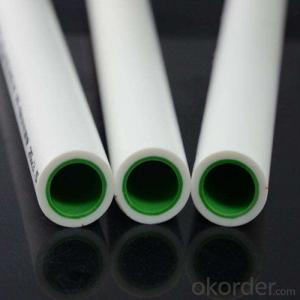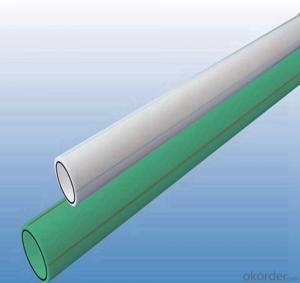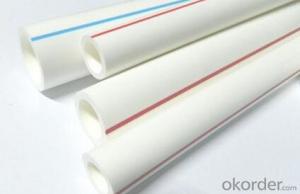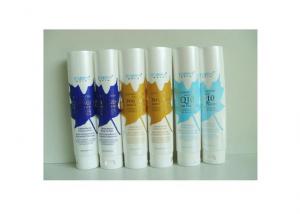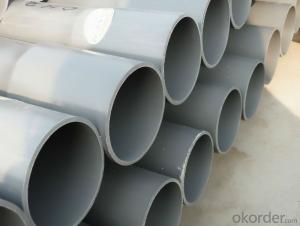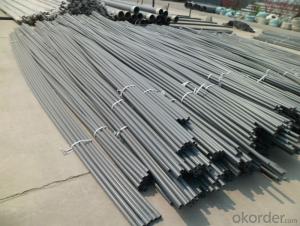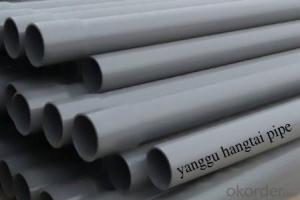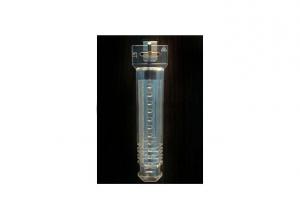Plastic Tubes - New PPR Pipes and Fittings for Irrigation Made in China
- Loading Port:
- Tianjin
- Payment Terms:
- TT OR LC
- Min Order Qty:
- 200 pc
- Supply Capability:
- 20000 pc/month
OKorder Service Pledge
OKorder Financial Service
You Might Also Like
Brief Introduction:
1.It is used in industrial fields, agriculture and garden irrigation
2. Beauty appearance.
3.Thermal insulation and energy saving.
4. Easy installation
5.excellent heat resistance and pressure resistance
6. affordable price
Product Applications:
1.Distribution for cool and hot water
2.Duct for drinkable water system
3.Pipes for kinds of high-temperature and low-temperature heating system
4.Pipes for heating and cooling settings in solar energy system
5.Connecting pipe for air conditioner
Main Product Feature:
1. Light weight, easy and quick assembly
2. Most suitable for carrying drinking water
3. Excellent corrosion and chemical resistance
4. Bacteriologically neutral
5. Low thermal conductivity
6. Safe and watertight joints
7. Reduce heat loss
8. High impact strength
9. Resistance to scaling
10. Resistance to frost
11. Usable in seismic areas
12. Resistance to abrasion
13. Resistance to stray current
14. Long operational durability
15. Overall Economical
Advantages:
1, High Temperature Resistance: the maximum sustained working temperature is up to 70 Degrees Celsius, the maximum transient temperature is up to 95 Degrees Celsius.
2, Heat insulation and Saving Energy: low thermal conductivity which is only 1/1500 of brass pipe, and 1/250 of steel pipe.
Non-toxic: no heavy metal additives would not be covered with dirty or contaminated by bacterium.
3, Corrosion Resistant: resist chemical matters or electron chemical corrosion.
4, Lower Installation Costs: light weight and good hot-melt performance can reduce installation costs by as much as 50% over metal piping system.
5, Higher Flow Capacity: smooth interior walls result in lower pressure loss and higher volume than metal pipes.
6, Recycled and Environment-friendly.
Product Description:
Pressure | Size(mm) | Pressure | Size(mm) |
PN1.25MPA | 20*2.0 |
PN1.6MPA | 20*2.3 |
25*2.3 | 25*2.8 | ||
32*2.9 | 32*3.6 | ||
40*3.7 | 40*4.5 | ||
50*4.6 | 50*5.6 | ||
63*5.8 | 63*7.1 | ||
75*6.8 | 75*8.4 | ||
90*8.2 | 90*10.1 | ||
110*10.0 | 110*12.3 |
Product Show:
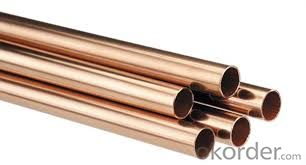
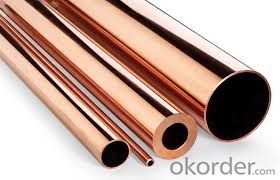
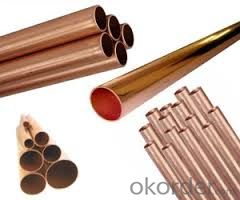
Our Factory:
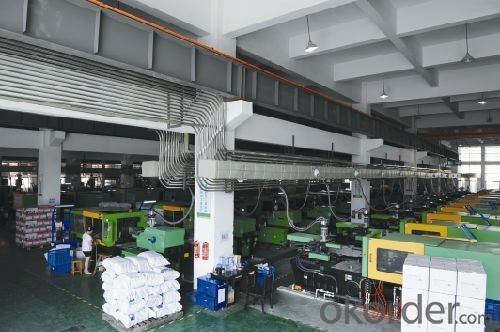
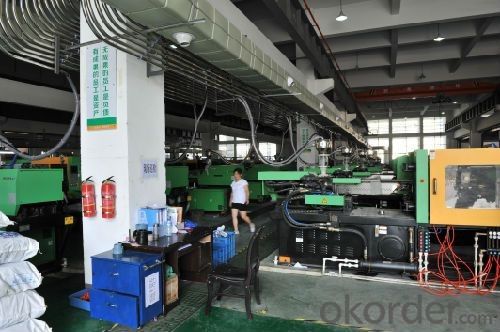
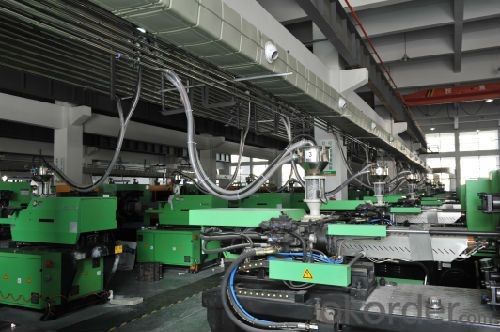
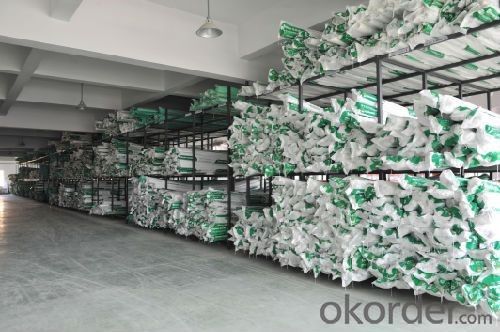
- Q: What is the average lifespan of plastic tubes in outdoor applications?
- The average lifespan of plastic tubes in outdoor applications can vary depending on factors such as the quality of the material, exposure to weather conditions, and maintenance. However, on average, plastic tubes used in outdoor applications can last anywhere from 5 to 20 years.
- Q: Why do all squeeze tubes have a square at the top?
- Do you mean at the portion furthest from the opening with the cap? Because the tube is filled from the end that is furthest from the opening with cap. Years ago (before flexible plastics existed) all tubes were made from a thick aluminum foil, the cap was put on it, the tube was filled from the opposite end from the cap, and the tube was sealed after filling by folding the open end over a few times and crimping it, which always produced a square end. Now adays with plastic tubing, which is sealed by melting the tube end together you could make it have pretty much any shape, but due to tradition a square end is still used, because that is what customers are used to buying.
- Q: Can plastic tubes be connected or joined together?
- Yes, plastic tubes can be connected or joined together using various methods such as adhesive bonding, heat fusion, compression fittings, or mechanical connectors.
- Q: What is the connection between the wires of the PVC?
- According to PVC wire varieties are divided into hard tube, semi hard tube and bellows, according to the characteristics of the line is divided into light, medium, heavy, ultra heavy, according to the wire temperature classification is divided into 25, 05, 90/-25 and so on. The nominal outer diameter specifications of PVC wire tubes are: Phi 16, Phi 20, Phi 25, Phi 32, Phi 40, Phi 50, Phi 63, Phi 75, Phi 110. Among them, PVC pipe specifications for phi 16 and phi 20, generally used for indoor lighting line; PVC tube diameter is Phi 25 specifications, commonly used in the socket or indoor main pipe; PVC pipe diameter is Phi 32 commonly used in the specification into the family line pipe, also for weak line pipe PVC pipe diameter; Specification for phi 50, Phi 63, Phi 75 commonly used in electric disc to indoor line pipe.
- Q: Do plastic tubes have any limitations in terms of moisture resistance?
- Yes, plastic tubes do have limitations in terms of moisture resistance. While some plastic materials are naturally more resistant to moisture, others may absorb moisture over time or under specific conditions. Additionally, the design and construction of plastic tubes, such as the presence of seams or joints, can also affect their moisture resistance. It is important to consider the specific plastic material and construction of the tube when assessing its moisture resistance capabilities.
- Q: I need to clean my gravel and have read a bunch of reveiws on the gravel cleaning syphons and I don't want to waste my money on a cleaner that doesnt work. I might not be using the correct term for the product, it is one of those tubes that you shake to create a syphon. Thanks for all your help
- The easiest way is to suck on the end of the tube to draw up water and kink the tube or use your finger to cover the end .to keep the water near to the end. Then lower the end to the container and let off your finger. The weight of water in the tube and gravity will do the rest. As long as you have the end of the tube above the level of water in the tank while you are drawing water into the tube, you will NOT get a mouthful as you can see to stop just before the water gets to the end. I am sure you are smart enough to stop before you get a mouthful of water. As long as the end is above the level in the tank the siphon will NOT start and you will have to apply suction to hold the water in the tube until you kink it or use your finger to seal the end. The only way to get a mouthful is if your mouth is lower then the level in the tank so the siphon starts once the water crosses the threshold, Be careful not to suck up the fish...
- Q: How to distinguish between hard plastic pipes and flame retardant plastic pipes?
- You can use this simple method to make a difference. Lighter with these two kinds of plastic, if it is flame retardant plastic will probably go out, no flame retardant will continue to go down, you can try.
- Q: Can plastic tubes be used for scientific experiments?
- Yes, plastic tubes can be used for scientific experiments. They are commonly used in various laboratory settings for tasks such as sample storage, liquid handling, and centrifugation. Plastic tubes offer advantages such as transparency, durability, and compatibility with a wide range of chemicals and temperatures, making them suitable for many scientific applications.
- Q: I need to buy plastic (or clear colored) plastic tubes with caps. Approximately 5 or 6 inch in length and close to 1 inch or close to it in width. Would appreciate any suggestions where I find it.
- the hardware giants like Lowe's and the Ho Depot are your best bet ... go in the store and ask for plastic tubing==== HEY !! you might do better to go to a friendly pharmacy and get some clear plastic medicine bottles ... go and ASK ... and if this is
- Q: Are plastic tubes suitable for use in the textile industry?
- Yes, plastic tubes are suitable for use in the textile industry. They are commonly used for various purposes such as storing and transporting fabrics, yarns, and other textile materials. Plastic tubes offer durability, flexibility, and protection to the textiles, making them an ideal choice for the industry.
Send your message to us
Plastic Tubes - New PPR Pipes and Fittings for Irrigation Made in China
- Loading Port:
- Tianjin
- Payment Terms:
- TT OR LC
- Min Order Qty:
- 200 pc
- Supply Capability:
- 20000 pc/month
OKorder Service Pledge
OKorder Financial Service
Similar products
Hot products
Hot Searches
Related keywords
